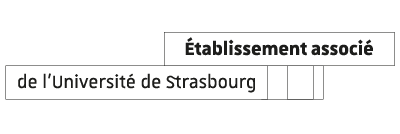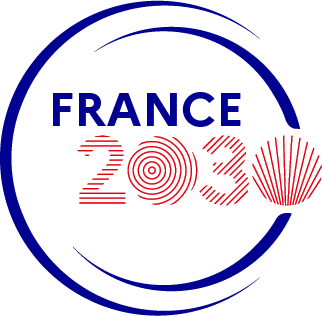Information importante
La page que vous consultez correspond à l'offre de formation 2023-2024.
Trouvez votre formation pour l'année universitaire 2024-2025
Finite elements
- Cours (CM) -
- Cours intégrés (CI) 48h
- Travaux dirigés (TD) -
- Travaux pratiques (TP) -
- Travail étudiant (TE) -
Langue de l'enseignement : Anglais
Enseignement proposé : en présentiel enrichi de ressources pédagogiques numériques
Niveau de l'enseignement : C1-Autonome - Utilisateur expérimenté
Description du contenu de l'enseignement
Finite element modelling for mechanical and thermal systems is the combination of analytical and experimental methods in physics and mechanics applied to geoscience. A part of the courses covers how to pose a problem in Partial Differential Equations terms. Another part covers basic analytical and numerical methods to solve these problems. Eventually, one of the basic methods to solve numerically partial differential equations is by the Finite Element Method. Basics of this method, as well as the versatile and powerful software incorporating most classical Finite Element Methods resolution, and the visualization of the results, COMSOL, is also introduced during the course. A walkthrough on how to set the problems, solve the problem, exploit the solutions, is provided to the students. This software is one of the most standard ones used in engineering communities. The students learn typical geoscience problems, the basic physics, math, numerical methods they develop themselves in python, and the use of this integrated software.
The finite element method allows for simulating multi-physical processes. In geoscience, this can be used in a wide range of applications that involve flow, mass and heat transfer in aquifers and geological reservoirs. These applications cover petroleum reservoir, geothermal energy, CO2 geological sequestration and nuclear waste storage. Finite Element Methods (as e.g. in COMSOL) and Finite Difference Methods can be also used in environmental applications such as aquifers management, seawater intrusion, and groundwater protection in oil and gas Production. In research studies, it can be used as a tool to understand physical processes and to validate experimental data. In practical studies, it can be used as a tool for designing systems, optimizing systems operation and developing predictive studies.
Topics:
Analysis of conservation equations of flow in porous media, vibrations, seismic waves, heat diffusion, advection and diffusion of che mical elements in fluids in porous media.
Classification of partial differential equations, resolution methods of partial differential equations
Numerical Integration of Ordinary Differential Equations.
Advection, diffusion, heat transfer, chemical elements transfer: Finite Difference Methods and applications in Earth Science. Implementation in Python.
Finite Element Methods: Heat Transfer, Fluid Flow, 1-phase, 2-phase, Reservoir Management.
Transfer of Pollutants, extraction and injection of fluids in reservoirs.
Basics, Grid Choice, Time dependent problems, steady-state problems. Galerkin methods. COMSOL.
The finite element method allows for simulating multi-physical processes. In geoscience, this can be used in a wide range of applications that involve flow, mass and heat transfer in aquifers and geological reservoirs. These applications cover petroleum reservoir, geothermal energy, CO2 geological sequestration and nuclear waste storage. Finite Element Methods (as e.g. in COMSOL) and Finite Difference Methods can be also used in environmental applications such as aquifers management, seawater intrusion, and groundwater protection in oil and gas Production. In research studies, it can be used as a tool to understand physical processes and to validate experimental data. In practical studies, it can be used as a tool for designing systems, optimizing systems operation and developing predictive studies.
Topics:
Analysis of conservation equations of flow in porous media, vibrations, seismic waves, heat diffusion, advection and diffusion of che mical elements in fluids in porous media.
Classification of partial differential equations, resolution methods of partial differential equations
Numerical Integration of Ordinary Differential Equations.
Advection, diffusion, heat transfer, chemical elements transfer: Finite Difference Methods and applications in Earth Science. Implementation in Python.
Finite Element Methods: Heat Transfer, Fluid Flow, 1-phase, 2-phase, Reservoir Management.
Transfer of Pollutants, extraction and injection of fluids in reservoirs.
Basics, Grid Choice, Time dependent problems, steady-state problems. Galerkin methods. COMSOL.
Compétences à acquérir
- Understanding physical processes of heat transfer in porous media and related environmental and industrial applications
- Understanding physical processes of fluid transfer in porous media and related environmental and industrial applications (sequestration, water use, pollution transfer, transfer in reservoirs)
- Understanding seismic wave propagation
- Deriving the partial differential equation describing these phenomena
- Basics of classification and analytical solutions of partial differential equations.
- Learning the numerical modeling procedure using finite differences and finite elements
- Getting theoretical background on the finite element method
- Implementing finite element codes (using COMSOL) and finite difference codes (in Python)
Contact
Responsable
Renaud Toussaint
Marwan Fahs
MASTER - Sciences de la Terre et des planètes, environnement














